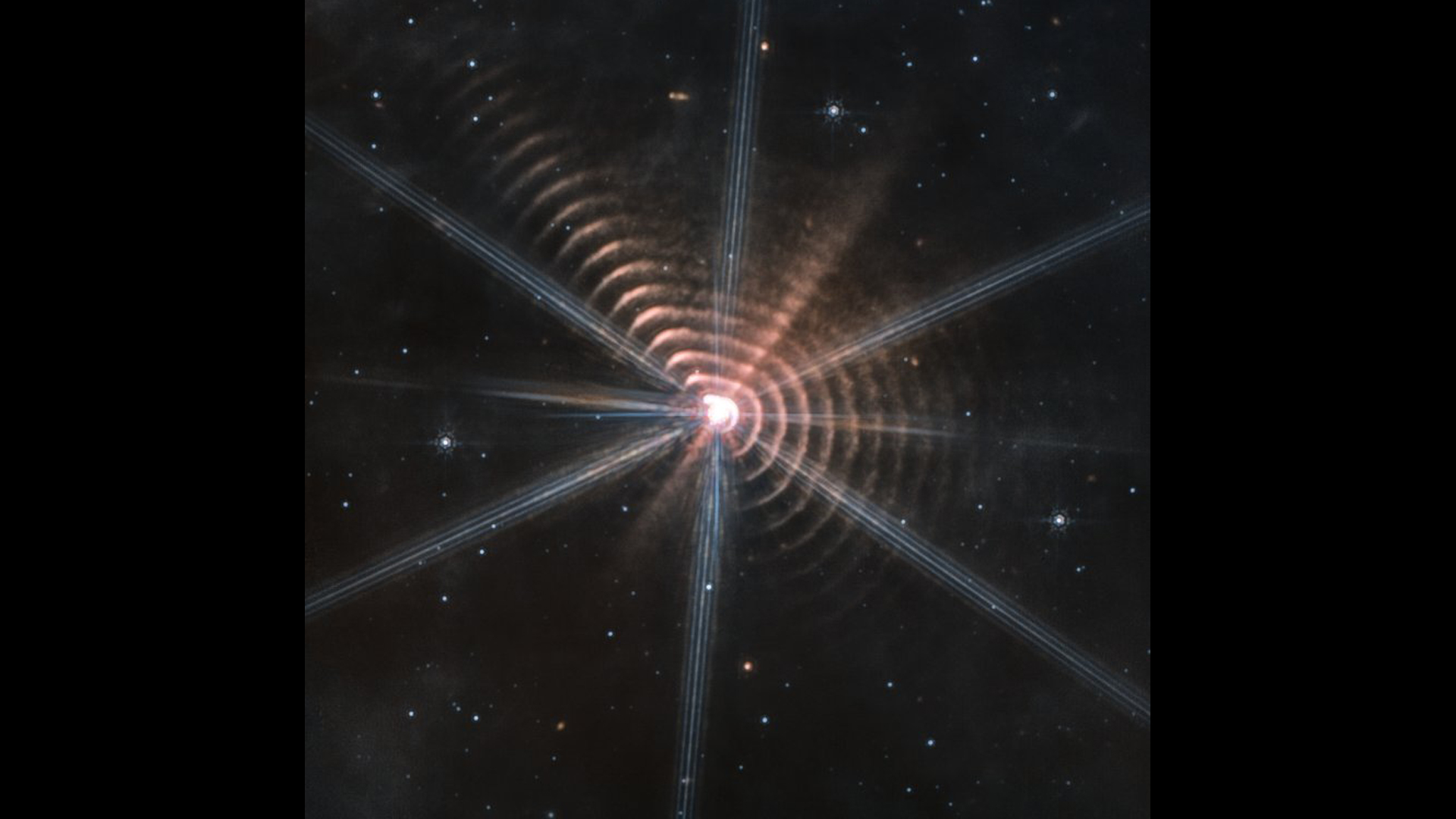Mysterious rings in new James Webb Space Telescope image puzzle astronomers
Concentric ripples surrounding a distant star have a strange, squarish shape.

The James Webb Space Telescope captured mysterious concentric rings around a distant star that astronomers are still working to explain.
The image, taken in July, was released on Twitter by citizen scientist Judy Schmidt, prompting a torrent of comments and head-scratching. It shows a star known as WR140 surrounded by regular ripple-like circles that gradually fade away. The circles, however, are not perfectly round, but have a somewhat square-like feel to them, prompting speculations about possible alien origins.
"I think it's just nature doing something that is simple, but when we look at it from only one viewpoint it seems impossible, at first, to understand that it is a natural phenomenon," Schmidt told Space.com in an email. "Why is it shaped the way it is? Why is it so regular?"
Related: Marvel at the James Webb Space Telescope's largest image of the cosmos yet
Mark McCaughrean, an interdisciplinary scientist in the James Webb Space Telescope Science Working Group and a science advisor to the European Space Agency, called the feature "bonkers" in a Twitter thread.
"The six-pointed blue structure is an artifact due to optical diffraction from the bright star WR140 in this #JWST MIRI image," he wrote. "But red curvy-yet-boxy stuff is real, a series of shells around WR140. Actually in space. Around a star."
He noted that WR140 is what astronomers call a Wolf-Rayet star, which have spat much of their hydrogen into space. These objects are also surrounded by dust, he added, which a companion star is sculpting into the strange shells.
Breaking space news, the latest updates on rocket launches, skywatching events and more!
Astronomers will know more soon thanks to a scientific paper currently under review about this mysterious phenomenon.
"Yes, those nested 'squircular' rings are real," Ryan Lau, an astronomer at NOIRLab and principal investigator of the project that acquired the observations, replied to the Twitter thread. "Our paper on this has been submitted so please stay tuned for the full story."
WR140, located some 5,600 light-years away from Earth in the constellation Cygnus, is a so-called variable star that periodically dims and brightens. Whether the star's variability has anything to do with the mysterious ripples remains to be seen.
The image, however, demonstrates the power of the $10 billion James Webb Space Telescope, the most powerful observatory ever sent to space, which has been hailed for its revolutionary infrared vision and superkeen eye.
Follow Tereza Pultarova on Twitter @TerezaPultarova. Follow us on Twitter @Spacedotcom and on Facebook.

Tereza is a London-based science and technology journalist, aspiring fiction writer and amateur gymnast. Originally from Prague, the Czech Republic, she spent the first seven years of her career working as a reporter, script-writer and presenter for various TV programmes of the Czech Public Service Television. She later took a career break to pursue further education and added a Master's in Science from the International Space University, France, to her Bachelor's in Journalism and Master's in Cultural Anthropology from Prague's Charles University. She worked as a reporter at the Engineering and Technology magazine, freelanced for a range of publications including Live Science, Space.com, Professional Engineering, Via Satellite and Space News and served as a maternity cover science editor at the European Space Agency.
